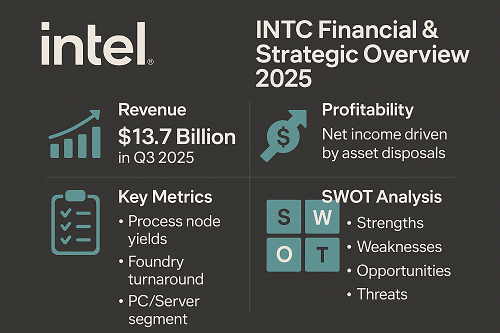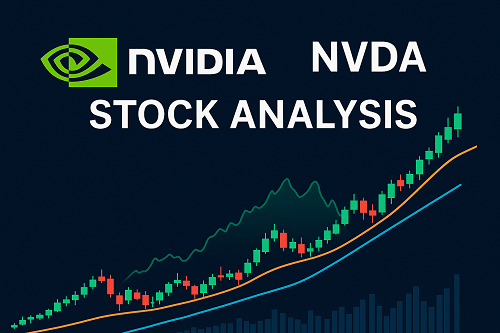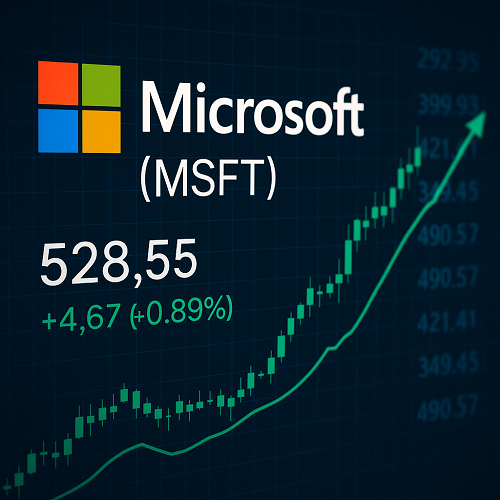Intel, a semiconductor giant and perennial player in the CPU/microprocessor space, has entered a pivotal turnaround phase. To fully understand its financial trajectory, analyzing the Nasdaq INTC financials is essential. After years of margin erosion, technology headwinds, and competitive pressure, the company is now executing cost-cuts, manufacturing resets, and strategic repositioning in AI, foundry services, and packaging. This article will cover:
- Recent financial performance (revenue, profitability, margin trends)
- Segment-level breakdown and business model evolution
- Strategic initiatives (foundry, AI, manufacturing)
- SWOT (Strengths, Weaknesses, Opportunities, Threats)
- Risks & outlook
- What investors should pay attention to going forward
By the end you will have a clear picture of Intel’s current state, whether it is a value play, turnaround bet or cautionary tale.
Recent financial performance
Revenue and profitability trends
- In Q4 2024, Intel reported revenue of US $14.3 billion, a decline of 7% year-on-year.
- For full-year 2024: revenue of US $53.1 billion, down ~2% from prior year.
- Most recently in Q3 2025, Intel reported revenue of approximately US $13.7 billion, up ~3% YoY and ~6% QoQ.
- The Q3 2025 net income came in at ~US $4.1 billion, driven in large part by one-time gains from asset disposals (sale of stakes in businesses).
- Despite the profit result, core operations remain challenged: the foundry business still losing money, manufacturing yield issues remain.
Margin and cost structure
- Gross margin in Q4 2024 was ~39.2% (down ~6.5 percentage points from Q4 2023).
- In Q3 2025 gross margin improved to ~38.2%.
- Operating expenses (R&D + MG&A) in Q3 2025 were about US $4.4 billion, down from US $5.4 billion year-ago.
- Intel has announced significant cost-cutting and disposal of non-core assets (e.g., stake sale in Altera Corporation programmable-chip business) enabling lower expense guidance for 2025.
Segment performance & cash flow
- In Q2 2025, Intel’s operating cash flow was reported at ~US $2.1 billion, net CapEx ~US $3.1 billion, leaving negative adjusted free-cash-flow of ~US $-1.1 billion.
- The foundry segment (internal & external) remains a drag; losses persist due to ramp costs and yield issues.
Strategic evolution: Beyond CPUs
Intel is no longer just “make x86 chips for PCs and servers”. The company has shifted to a broader strategic model. Key pillars:
Foundry services (IDM 2.0)
Intel has committed to become a major foundry player: it designs, manufactures and packages semiconductors for itself and external clients. Key points:
- The challenge: Intel still trails leader TSMC in process-node performance and yields.
- The opportunity: Western geopolitics favour U.S./EU manufacturing scale (Intel’s footprint) under the CHIPS and Science Act.
- Current losses in the foundry business remain significant — ramp costs, under-utilised fabs, etc.
AI, data centre & edge computing
- Intel is increasingly positioning itself in the AI hardware stack (CPUs, accelerators, packaging) to gain from the AI surge.
- Partnerships: for instance, NVIDIA Corporation invested US $5 billion into Intel, signalling ecosystem cooperation.
- The Client Computing Group (PC/desktop) showed rebound in recent quarter (~US $8.5 billion revenue in Q3 2025) driven by refreshed high-margin CPUs.
Manufacturing & packaging innovation
- Intel emphasises advanced packaging (Foveros, EMIB) and module-level integration as differentiators.
- Manufacturing roadmap remains ambitious: multiple nodes in short time, reliance on internal fabs & external contractors. But execution risk is high.
SWOT analysis
Here is a tailored SWOT for Intel in 2025 and beyond:
Strengths
- Scale: Intel has massive manufacturing scale in U.S./Europe which is becoming a strategic asset.
- Integrated model (IDM): Being both designer and manufacturer gives flexibility and potential cost advantage.
- Established brand, long-standing relationships with PC OEMs, server customers, ecosystem.
- Government/industry backing (via CHIPS Act, strategic investments) provides tailwinds.
Weaknesses
- Technology lag: trailing in advanced nodes vs TSMC and others; yields and cycle times problematic.
- Foundry business remains a drag with ongoing losses.
- Margin pressure: legacy PC market declines, competition from ARM/AMD, price erosion.
- Capital-intensive business with large fixed costs and heavy investment required.
Opportunities
- AI infrastructure build-out: huge demand for semiconductors, packaging solutions, server CPUs, accelerators.
- Foundry demand: Western reshoring trends + CHIPS Act create opportunities for new clients.
- Packaging/heterogeneous integration: Intel’s technology can exploit these areas before pure logic node cycles catch up.
- Emerging markets (automotive, edge, IoT) where Intel has design/packaging competence.
Threats
- Intense competition: from TSMC, Samsung, AMD, Nvidia (in AI chips) and ARM ecosystem.
- Execution risk: failure to hit node yields/timelines could erode confidence and market share.
- Macro risks: downturn in PC/consumer demand, semiconductor cycles are volatile.
- Geopolitical & supply chain risk: e.g., U.S./China chip war, export restrictions, fab cost overruns.
What to watch: Key metrics & red-flags
For investors, analysts and traders, keep a close eye on the following:
- Process node yield improvements & time-to-volume (e.g., 18A, 20A nodes)
- Foundry client wins: how many external customers, utilisation rate, margin contribution
- Gross margin trends quarterly: movements above/below ~40% mark
- Free cash flow: Can Intel generate positive FCF after heavy CapEx?
- Cost-structure guidance: R&D and MG&A trends, asset-sales impact
- PC/Server segment health: Client Computing Group revenue, Data Centre & AI revenue
- Packaging technologies: adoption, competitive edge
- Regulatory/funding developments: CHIPS Act subsidies, government contracts
- Competitive response: how AMD, Nvidia, Apple/M1-M3 etc encroach on Intel’s turf
Outlook & valuation considerations
Near-term outlook
- Intel’s Q3 2025 results showed positive signs (growth, profit) but much of the profit was driven by non-recurring items. Operationally margins and segments are still under pressure.
- The market will closely assess the forward guidance: how realistic are margin expansions and foundry turnaround timelines.
- Cost discipline appears improving: Intel lowered its 2025 non-GAAP operating expense guidance after its Altera stake sale.
Medium-to-long term
- If process node execution improves, foundry business scales, and the AI/packaging plays gain traction, Intel could unlock significant value.
- However, if delays persist, competitive pressure intensifies, and margin erosion continues, Intel may struggle to reclaim former dominance.
- Given the capital intensity, the time-horizon for a full turnaround may be multiple years (2027-28 and beyond).
Valuation & trade-off
- From a valuation perspective, Intel may trade as a turnaround stock: higher risk, higher reward.
- Investors/traders should weigh: Is the risk worth the potential upside? What is the margin of safety?
- Given the legacy PC business decline and foundry headwinds, a conservative stance is warranted unless operational milestones are met.
Why this matters for you (whether trader, investor or analyst)
- For traders, Intel offers volatility around earnings, node announcements, foundry customer wins. A well-timed entry/exit around catalysts could yield alpha.
- For investors, Intel’s value hinges on its ability to execute — if you believe in the turnaround, investing early may capture leverage; but if not, the risk of structural erosion remains.
- For analysts, the depth of value lies in segment-level modelling (foundry vs client vs data centre), process roadmap execution, packaging uptake and macro-chip cycle timing.
Final thoughts
Intel stands at a crossroads: the company is reinforcing its foundations, repositioning for the AI and foundry era, and shedding legacy burdens. The potential upside is meaningful—but so is the execution risk. For stakeholders (traders, investors, analysts) the year ahead will be telling: will Intel deliver on its promise of manufacturing excellence, foundry growth and margin recovery, or will delays and competitive disadvantages continue to bite?
If you’re looking for a semiconductor exposure with significant turnaround potential and are comfortable with the risk, Intel is worth watching closely. But it’s not a “safe” play—rather, it’s a strategic bet on execution and industry shift.





 XAUT-USD
XAUT-USD  AMD
AMD  MARA
MARA  SHOP
SHOP  BULL
BULL  CL=F
CL=F